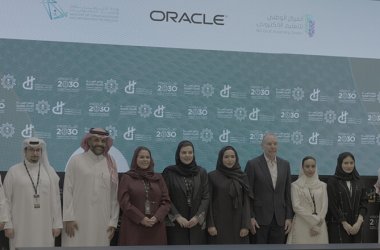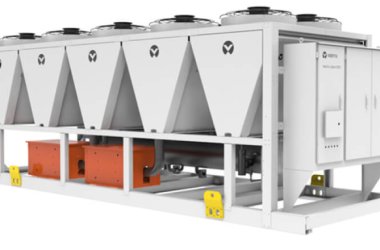
SAS offers AI and advanced analytics solutions that transform data into better decisions for all kinds of organisations.
To support greener business strategies, leading organisations are increasingly turning to AI, machine learning and Internet of Things (IoT) analytics. These technologies are helping them become more sustainable, reduce emissions, and develop smarter and more efficient operations.
Underpinning these solutions is SAS Viya, SAS’ cloud-native, massively parallel AI and analytics platform.
“A sustainable future requires solutions grounded in science and data to address climate change and adapt to its effects”, said SAS CEO Jim Goodnight. “Innovative and resilient organisations like the Istanbul Metropolitan Municipality and Wienerberger Group are applying analytics from SAS to support a greener tomorrow. Whether reducing traffic congestion or optimising energy usage, they demonstrate some of the many ways AI and advanced analytics are also making a difference today”.
Istanbul optimises traffic with AI
The population of Istanbul, the bustling business and financial capital of Turkey, has doubled over the last 20 years, reaching 16 million. This growth puts enormous pressure on the city’s transportation network. Some of the world’s most congested traffic creates gridlock in a labyrinth of local streets, and on modern highways and bridges.
The Istanbul Metropolitan Municipality (IMM) has turned to SAS to create smart-city digital infrastructure. With SAS analytics, Istanbul’s engineers and planners can better understand, forecast and manage the city’s traffic challenges.
At its core, the new system is powered by AI and machine learning running on SAS Viya. It analyses historical traffic data and incorporates live data feeds from a growing network of sources, including traffic cameras, sensors, data readers, mobile applications and payment gateways.
The results of this analysis can optimise bus routes with new traffic and passenger data to improve service and route availability. It can also anticipate traffic anomalies such as accidents, lane closures and sudden areas of congestion in real time by analysing route densities, driver behaviour and journey maps. With analytics models, IMM road operations can better control traffic signals and notify drivers through digital signage and mobile apps.
“With SAS AI and analytics, Istanbul’s municipal government can assess traffic conditions in real time, anticipate congestion trouble spots, and intelligently route traffic and guide citizens on their journeys”, said Dr. Naim Erol Özgüner, CIO of IMM.
“This helps reduce congestion, lower pollution levels and improve the quality of life for our citizens. The SAS-powered system supports Istanbul’s sustainability goals, restores public confidence in mass transit, and ultimately improves traffic flow that leads to better economic opportunities”.
Over the last year, EU countries have dramatically cut imports of Russian natural gas and oil, imposing sanctions in response to Moscow’s brutal invasion of Ukraine. The cut – and instability in energy markets globally – has dramatically increased energy costs across Europe.
Wienerberger – from brick plants to data-driven factories
For Austria-based Wienerberger Group, a leading provider of smart and sustainable solutions for the entire building envelope as well as innovative infrastructure solutions and the world largest brickmaker, this instability has meant a search for ways to reduce energy consumption while lowering greenhouse emissions and improving product quality. Wienerberger turned to AI and IoT analytics from SAS, running SAS Viya on Microsoft Azure Cloud, to help optimise energy costs and achieve its ambitious sustainability goals. By 2023, the company aims to reduce emissions by 15% compared to 2020 and be completely climate-neutral by 2050.
Working with SAS, Wienerberger selected a factory in Poland for an initial project. As one of the brickmaker’s best performing plants, the successful project now serves as a template for expanding the use of AI to other facilities.
Wienerberger collects data from a wide range of sources, from IoT edge devices and sensors throughout its factories to environmental data on weather and humidity to product spot checks during and after production. All this data reveals fluctuations that can lead to inefficiencies and unnecessary energy use.
With kilns for drying bricks running at 1,475 degrees Fahrenheit (800 degrees Celsius), the goal is to reduce variability to find ideal, repeatable production steps.
SAS helped Wienerberger develop a digital twin of its brick production processes that helps explain the fluctuations. The AI-powered digital twin also offers insights into changes that can lower energy use, improve product quality and reduce emissions.
“We use SAS AI and IoT analytics to link all our data streams together and analyse the entire production process. SAS analytics brings intelligence to the kiln by helping our engineers and frontline workers gain valuable insights into each step and identify specific setpoints to make the drying and firing of bricks more economical”, said Florian Zittmayr, Team Lead for Data Science at Wienerberger AG.
Wienerberger is seeking to expand the use of advanced analytics in the cloud across 149 facilities in 23 countries. By optimising energy consumption and reducing CO2 emissions through SAS AI and IoT analytics, Wienerberger is turning brick plants into data-driven factories.
For more on SAS industry solutions that can help organizations of any size, visit www.sas.com/en_us/industry.html.





